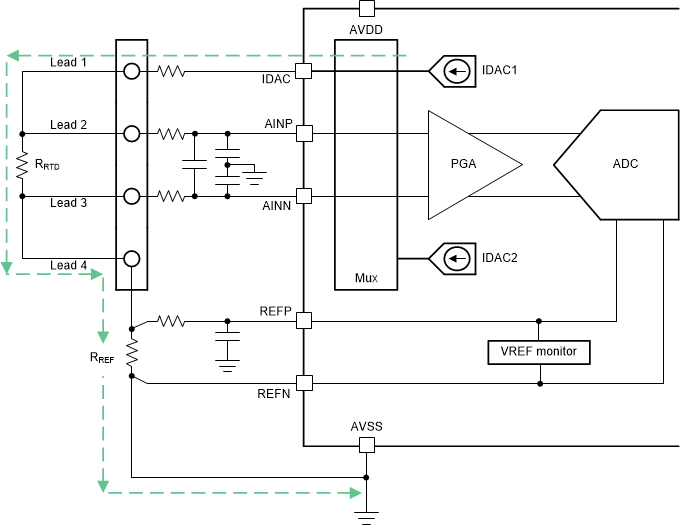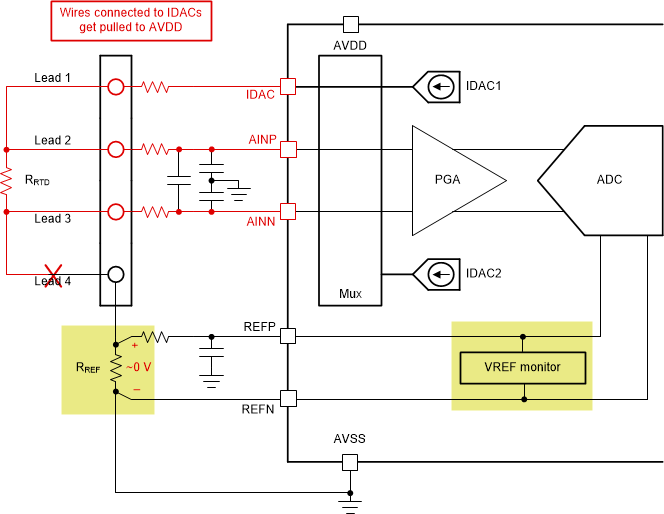SBAA483 February 2021 ADS1120 , ADS112C04 , ADS112U04 , ADS114S06 , ADS114S06B , ADS114S08 , ADS114S08B , ADS1220 , ADS122C04 , ADS122U04 , ADS124S06 , ADS124S08 , ADS125H02 , ADS1260 , ADS1261 , ADS1262 , ADS1263
- Abstract
- Trademarks
- 1Introduction
- 2Features Used to Detect Wire Breaks in RTD Systems
- 3Wire-Break Detection Methods for Different RTD Configurations
- 4Settling Time Considerations for RTD Wire-Break Detection
- 5Summary
- A How Integrated PGA Rail Detection Helps Identify Wire Breaks
- B Pseudo-Code for RTD Wire-Break Detection
2.1 Detecting a Wire Break Using a Continuous VREF Monitor
Figure 2-1 shows a 4-wire RTD using a low-side reference resistor (RREF) as an example of how to use IDACs and VREF monitoring to detect an RTD wire break. One IDAC is used for this RTD configuration, flowing through lead 1, RRTD, lead 4, and finally through RREF to ground. The ADC measures the RTD voltage at AINP and AINN and uses the voltage established across RREF as the reference voltage.
 Figure 2-1 IDAC Current
Flow in a 4-Wire RTD With a Low-Side RREF
Figure 2-1 IDAC Current
Flow in a 4-Wire RTD With a Low-Side RREFWhen a wire breaks, the current may no longer flow through the RTD, or more specifically through RREF. With no current flowing through RREF, the ADC reads a differential reference voltage of approximately 0 V between REFP and REFN. For example, Figure 2-2 shows that the IDAC current return path becomes an open circuit if lead 4 breaks.
 Figure 2-2 Detecting a
Wire Break Using a Continuous VREF Monitor
Figure 2-2 Detecting a
Wire Break Using a Continuous VREF MonitorIn Figure 2-2, the near-zero differential voltage applied between REFP and REFN trips the VREF monitor in the ADC, which has a typical threshold of a few hundred millivolts. This monitor sets a flag in the ADC STATUS byte that can be read continuously by the host to determine corrective action. In other words, this monitoring is completed in real-time without interrupting the precision RTD measurement.